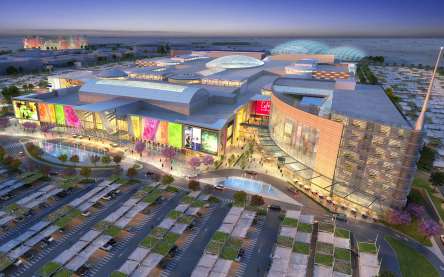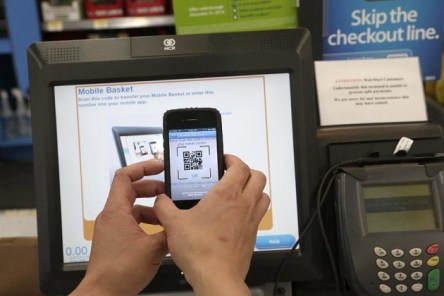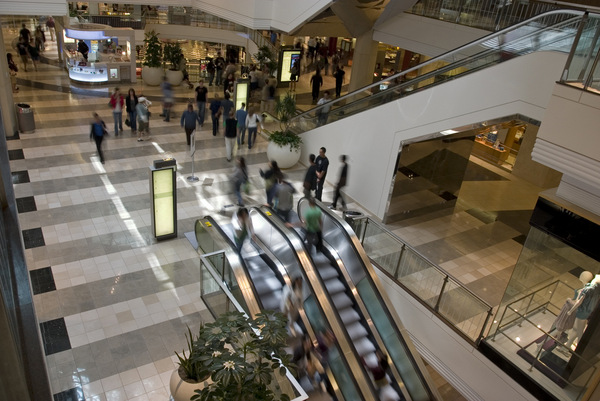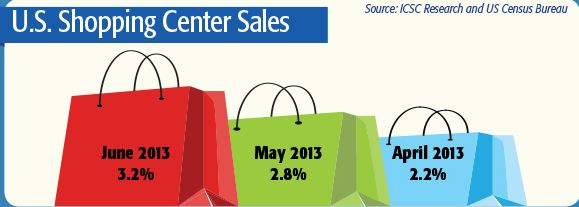You might notice it sometimes but it’s usually unobtrusive, discernable only if you stop what you’re doing and concentrate on it. It’s the background music that accompanies your visit to many retail stores and restaurants around the world. Clinical research indicates that a store’s atmosphere affects the emotional states of consumers by appealing to the pleasure centers of the brain. Customers who listen to music they like are more likely to stay in stores longer and make return visits, according to data gathered by Mood Media, an Austin, Texas-based sound design agency that specializes in music for public spaces including those operated by Dunkin’ Donuts, The Home Depot and Wendy’s. “Retailers with a sound knowledge of how in-store music influences shopper’s attitudes can harness its powerful effects on the human mind,” says Tampa, Fla.-based Spectrio, a customer engagement specialist firm. “Choosing music for your shop involves sending shoppers the right message: you want them to feel positive and confident in their shopping choices, living in the moment and excited to make a purchase.” Setting the mood Researchers generally agree that slower, more leisurely music causes shoppers to spend more time contemplating their purchases and enjoying the atmosphere. Up-tempo or fast-paced music encourages quicker shopping. The type of music can matter as well. For example, classical music projects an air of expense and quality, suitable for expensive merchandise such as upscale fine foods. Top 40 pop music might be ideal for teenagers, whereas country music could be the best enticement for shoppers at outdoor clothing stores. “A bookstore may benefit from mellow music played at low volumes, which lets customers peruse books before buying them. A clothing store wishing to project youthful energy may opt for upbeat music at higher volumes,” reports Shopify, a Canadian company...
Saving Retail
Creative Retail Experiences
Do you remember when online shopping first began to disrupt brick and mortar stores? Shops struggled before the pandemic and now they face additional hurdles. Fortunately, small business owners are creative and resilient. We interviewed several small business owners and marketers to learn how they’re staying in business and keeping customers engaged during the pandemic. Re-creating the in-store experience Consultations, semi-private + private shopping Exclusive, in-store shopping experiences were once reserved for the rich and famous. Big-name customers could arrange to shop outside of operating hours or arrange have the shop vacant during their visit. While this is still the case, there are new players on the field. Tiny shops lifted a page from the celebrity handbook. These small stores limit the number of people permitted in the building to create a more private shopping experience. The added benefit is that customers gain more one-on-one attention and support from clerks. “This is a terrific way to permit in-person shopping while building customer loyalty and encouraging good online reviews,” says Edith Peele, owner of Simple Threads clothing boutique near Covington, GA. “We’re limiting the number of shoppers for safety, but it feels more like an exclusive, fancy shopping experience.” Interactive shopping A second opinion can be an incredibly valuable thing. You’ve likely been there: you have two (or more) products that you like. You need to narrow down your options but can’t seem to make a decision on your own. You reach for a second opinion. That second opinion can now be a store clerk on FaceTime or in a chat window. It’s a relatively simple way to encourage safe interaction and a value-add service not found in larger online-only retailers. Make gift preparation a breeze By preparing online purchases as gifts, retailers take three...
Conscious Commercial
One Mado at Serenbe
Imagine an oasis of calm just outside of the bustling city, a place where the community is structured around wellness and a connection with nature. Now imagine that this place has as many fun shopping and entertainment options as a conventional neighborhood– without conventional waste issues. This place exists and it’s called Serenbe. Welcome to Serenbe The New York Times calls the development “a utopian experiment in new urbanism being molded out of Georgia red clay ” about 30 miles southwest of Atlanta. More than 700 residents call Serenbe home. The community is often called together for music festivals, goat yoga, movie nights, wine tastings, and local theater performances. As provincial as it sounds, Serenbe is not a haven for barefoot wanderers and struggling artists. Homes start at $1,400 per month for a 600 square-foot apartment and max out shy of $2,000,000 for a single family home. Those are high price tags for Chattahoochee Hill Country, an otherwise unassuming rural community. With that said, Serenbe is probably the coolest countryside hamlet in the southeast for its emphasis on wellness and sustainability. Conscious Convenience For several years, development focused mostly on residences, often countryside getaways for Atlanta’s elite. Commercial construction has established a presence in the community—still abiding by community virtues—but offering more experiences and conveniences for residents. Four complexes form the hub of shopping at Serenbe. Each has a unique focus such as art, education, agriculture and health. The Mado District is the latest addition with an emphasis on health. One Mado will be a $250 million, 30,000 square-foot mixed-used development that is an alternative to the quintessential strip mall. Tenants will likely include health and wellness specialists such as a chiropractor, massage therapist, acupuncturist, and other holistic practitioners. There are also parcels for...
Great Expectations
UK Retail Real Estate
LONDON – The evolution of the retail store in the face of growing online sales has been much written about, but shopping centres also can’t afford to be left behind in the age of ecommerce and changing technologies. This Retail Week report – produced in association with Yardi – explores how retailers view shopping centres and ways that centres can create an environment in which retail doors not only remain open, but thrive in a digital era. Based on interviews with 50 retail directors responsible for store portfolios – each representing a company with a turnover of between £50m and £10bn – the report finds strong similarities in what retailers want from shopping centres, and reflects changing shopper habits. Key themes are explored around how shopping centres can better support retailers, including expectations about infrastructure for technology and data, as well as how they can attract new entrants. The right mix between retail, leisure and dining is a fundamental attraction, while providing wi-fi is a prerequisite for retailers setting up shop in malls, which has both customer-facing and operational benefits. The future opportunities for shopping centres to enhance their performance, while diverse, are all underpinned by robust data. Decisions are increasingly data-led, and while current platforms – typically management software and spreadsheets – for data sharing have been well-received by retailers, there’s a strong feeling centre owners could provide more information. In particular, they want detail about footfall, dwell time and average spend, to better understand the local catchment and to adapt store space accordingly. Common themes for shopping centre investment over the next 12 months, according to our surveyed retailers, include keeping up with new technology, integrating ecommerce and opening new stores – all of which are elements that new entrants such as...
A Door to Heaven
Mall of Qatar Chooses Yardi
When it opens to the public in summer 2016, the Mall of Qatar in Al-Rayyan will be a modern paradise smack dab in the in the middle of the Qatar desert. With over 2,755,561 square feet of Gross Leasable Area, upon completion the Mall of Qatar will cater to shoppers’ every whim. Massive in scale, the planned three-story structure will span the length of 50 soccer fields. Upon completion, visitors to the Mall of Qatar will be able to sample food from over 100 restaurants, buy products from over 500 stores and participate in a variety of unique entertainment experiences, including the largest IMAX Laser 3D projection system in the world. Envisioned as a “sophisticated, urban-lifestyle market, the mall will be outfitted with vaulted glass ceilings, sidewalk cafes, and unique water features. A main feature of the project is the multi-level Family Entertainment Complex, which will include a 10-lane bowling alley and a 19-screen Cineplex. For fans of live performance, the mall’s Festival Stage will host professional acts from around the world on a 360-degree, multi-lift, rotating stage outfitted with the latest sound and lighting technology. As the mall’s floor space spreads out across the desert, so do its recreational opportunities. A not-even-close-to-exhaustive list of additional amusements includes an Angry Birds theme park, a mini-roller coaster and a flight simulator. An indoor “edutainment” park called “Juniverse” will allow children to play at space exploration and firefighting. Older patrons can participate in “Escape the Room” challenges, where teams work together to unlock puzzles in a set amount of time. Up to 7000 automobiles can be accommodated in the mall’s parking lot, most under canopies designed to deflect and control the midday sun and bathe vehicles in merciful shade. For commuters without cars, sleek, modern metro...
Walmart Pay
In-Store Mobile Payments
The mobile payments war is far from over. In fact, it just got much more interesting since Walmart entered the scene—yes, mega retailer Walmart announced recently that it plans to offer mobile payments to its shoppers. Walmart Pay has launched as a feature in the retailer’s existing smartphone app. That will be compatible with all credit cards, debit cards, and Walmart gift cards. Considering that the company accounts for about 10 percent of the retail sales in the country, the service can potentially pose a challenge to Apple Pay and Android Pay. “Walmart Pay is the latest example – and a powerful addition – of how we are transforming the shopping experience by seamlessly connecting online, mobile and stores for the 140 million customers who shop with us weekly,” said Neil Ashe, president & CEO of Walmart Global eCommerce. Open, Scan, Done Walmart’s payment method won’t be using the near field communication (NFC) technology (adopted by Apple, Android, and other “tap to pay” systems). Instead, it enables payments by scanning QR codes at point of sale terminals in the store. Additionally, the user will have to set a 4-digit passcode (or use Touch ID, if you have an iPhone) to authenticate purchase. Once set up, the user can pay for purchases in the checkout line by selecting Walmart Pay from the app’s “Shop” menu. Here’s a catch: since its system relied in a smartphone’s camera, rather than an NFC chip, it’s compatible with a larger number of devices—Apple added NFC capabilities starting with iPhone 6 and let’s not forget that many lower-end Android handsets don’t support the feature, either. Walmart’s move doesn’t come as a surprise. The company claims it already has 22 million people using its app every month, so building payments into...
Yardi Think Tank
UK Retail Asset Management
The fifth in Yardi’s series of thought leadership Think Tanks, held in association with Property Week, brought together retail centre owners and managers to discuss their experience and opinions on how to remain successful in a competitive retail environment. London’s retail scene is arguably the best in the world, with billions of pounds spent annually in the capital’s designer stores, boutiques and big-brand outlets. But as fashions in real estate strategy change, today’s retail landlords and property managers must move with the times to keep on attracting consumers. In a series of real estate think tanks, Yardi brought together a panel of retail experts to discuss the burning issues. Jace Tyrrell, deputy chief executive, New West End Company Jordan Jeffery, head of retail management, JLL Robin Dobson, director of retail development, Hammerson Clare Harris, head of group marketing & communications, Shaftesbury Chair: Claer Barrett, Financial Times CB: Let’s start by talking about online retail – have retailers and landlords passed ‘peak disruption’? RD: If you look back 10 years, the property industry was scared; now, I think we’ve come through the eclipse. The opportunity to create the best physical stores is complimentary to the drive to online. ICSC research showed that 90% of transactions still happen in a physical location – customers may have seen the product in a store, then ordered it at home or on a screen, or they might have ordered it at home and gone into the store to collect it. John Lewis recently reported that 50% of its in-store sales are coming from ‘click and collect’. As landlords, we create the platform for others to create the theatre. JJ: Everyone has had to adapt to online changes. Today’s consumers are much more informed and do a lot more research...
Keeping Up with E-Commerce
Impact on Retail Real Estate
As online sales continue to rise, the signs of the Internet’s impact on retail real estate are hard to According to projections by Forrester Research, cross-channel retail sales—including those influenced by online information but completed in stores—will hit $1.8 trillion by 2017, up from $1.2 trillion in 2012. Projections of new-store openings hold more subtle clues. Cassidy Turley estimates that restaurants will account for 43 percent of the 38,000 new-store openings expected this year. Until 2011, new-restaurant openings averaged only about 35 percent of the total. The result hints that online sales are contributing to a broad slowdown in non-restaurant retail expansion, according to Garrick Brown, director of research for Terranomics, Cassidy Turley’s retail affiliate. For retail real estate management, the implications of e-commerce are both far-reaching and complex. The much-noted preference for smaller footprints is a fact of life for many electronics retailers, department stores and other categories, which can treat their stores as showrooms, notes David Birnbrey, chairman & co-CEO of the Shopping Center Group. The influence of online shopping on this shift is impossible to miss. As a rule of thumb, Birnbrey says, the most likely products to be sold via e-commerce are those people don’t mind waiting for. For instance, according to the most recent estimates by the Census Bureau, computers and consumer electronics account for 22 percent of all Internet sales. Apparel, the runner-up, makes up 18 percent—the only other category to reach more than 10 percent of total online sales. Yet rising online sales do not negate the value of a strong brick-and-mortar presence for apparel retailers. Ordering a DVD online is one thing, but customers like to see clothing and try it on before taking out their wallets. In this fast-changing environment, retailers are expanding the complementary use of different retail channels. Fulfillment is one activity demonstrating robust growth, with bigger retailers increasingly fulfilling e-commerce orders from their stores, observes Bryan Jensen, vice president & principal of supply-chain strategy and logistics consulting firm St. Onge Co. By the end of last year, Best Buy Co. was offering its ship-from-store service at more than 400 locations. Macy’s, too, is expanding its omni-channel services, with plans to make fulfillment available at 500 stores. And in November, Gap Inc. expanded its “Reserve in Store” service to more than 200 Gap stores in 15 markets as well as its entire Banana Republic portfolio. Customers are invited to order as many as five items, which are held at the store for pickup until the next business day. On the flip side, some retailers are downsizing their stores, partly vacating a large-scale footprint. That presents a series of challenges for the owner and its leasing agent, since they have to ensure enough frontage for the retailer that replaces them, according to Jeff Green, a veteran retail real estate consultant based in Phoenix. But space that needs backfilling also gives the management team a chance to refresh a center—for instance, replacing an office products store with a strong anchor like Whole Foods. More complex are some new strategies emerging from a combination of growth in e-commerce and continued economic recovery. Macy’s, for instance, drew headlines in January when it announced intentions to shutter stores in a number of states—including Arizona, Kansas, Maryland, New York and Utah—and trim about 2,500 jobs. Its focus on its online sales was widely cited as a factor, but amid the buzz about the closings, the company’s plans for new stores may have been overlooked. By fall 2016, the department store chain expects to open stores Macy’s-brand stores ranging from 150,000 to 195,000 square feet in the Bronx, N.Y., Las Vegas, Miami, Ponce, Puerto Rico, and Sarasota, Fla. During that stretch, Macy’s will also roll out new Bloomingdale’s stores in Honolulu, Miami and Palo Alto, Calif. Of note, the 120,000-square-foot store at Stanford Shopping Center in Palo Alto will replace an aging predecessor that, at...
Shopping Snapshot
ICSC Infographic
You may have heard that Americans now do all of their shopping online. But it’s too soon to write shopping off as a national pastime just yet. In fact, shopping centers across the nation are seeing steady increases in sales this spring and summer, benefiting the economy. Jobs at the mall are also up. And in the good news category for commercial real estate companies, net operating income for shopping centers showed a steady upward trend in Q2 2013. These observations are culled from a dynamic infographic from the International Council of Shopping Centers (ICSC), shared below. What are shoppers spending more of their money on this year than last? Groceries, jewelry and home furnishings lead the way. Have you been spending more time at the mall this year? Are leasing conditions strong in your local retail market? Thanks to the ICSC blog for permission to share this...
Shopping for Gen Y
Housing preferences
As more of the 80 million-member Millennial generation enters the workforce, these so-called Gen Y-ers, age 18 to 35, are on everybody’s minds these days as one of the largest—and most fickle—groups to influence housing, shopping and the workplace. Financially strong and responsible, they nonetheless like to shop, prefer convenient housing over expansive, and while they are not yet the company decision makers, they certainly represent a growing proportion of the workforce—with a work style that is sometimes at polar opposites to their parents, the giant Baby Boomer generation. The Urban Land Institute followed up last year’s study of Gen Y housing preferences with a new analysis of their retail habits, released during the Spring Meeting, which took place in San Diego in mid-May. The study identified a strong group, with even a good percentage of those in their 20s financially independent and earning a comfortable living. Sixty-five percent of the 1,251 respondents to the survey said they do not receive financial help from their parents, with 41 percent working full time and fully 46 percent achieving household income of $50,000 or more per year. Thirty-two percent own their own home (predominantly those in their 30s). They carry an average of $22,000 in student debt, but four of five said they don’t use credit cards and 27 percent pay their credit card bills in full every month. Interestingly, while a large proportion live in or near cities, their orientation and long-term plan may be otherwise. Just 14 percent live in or near downtowns, but another 34 percent live in city neighborhoods outside the downtowns (think Brooklyn in New York City or Buckhead in Atlanta), while 13 percent live in dense older suburbs and 11 percent in newer, outlying suburbs; 19 percent in small cities...










